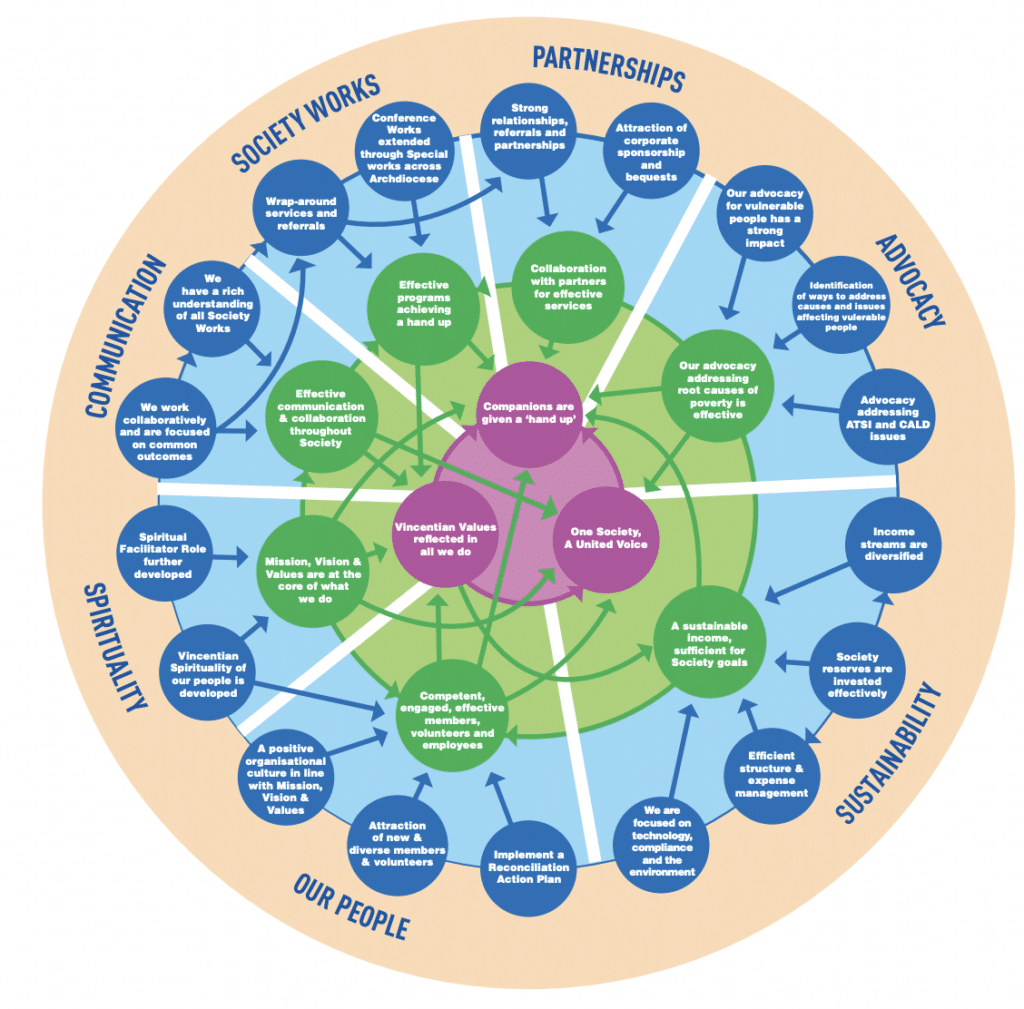Are you worried about how a recession might affect your nonprofit organisation and the services it provides to the community?
I recently had a conversation with a friend who runs a local nonprofit organisation, and she shared her concerns about the potential impact of an economic downturn. It got me thinking about what nonprofits can do to prepare and ensure they can continue making a positive impact on people’s lives.
While there is a common perception that charitable giving tends to decrease during a recession, research suggests that this may not necessarily be the case. In fact, some studies have shown that charitable giving does not fall at the same rate as the economy and, in some cases, remains relatively stable during economic downturns. Nonetheless, it is still important for nonprofit organisations to prepare for a recession (as should any business), as they may face other challenges such as reduced government funding and increased demand for their services.
So, let me share with you some practical strategies that can help nonprofits diversify their revenue streams, cut unnecessary costs, increase fundraising efforts, focus on impact, and embrace technology. These strategies have been successfully implemented by Australian nonprofits such as ‘The Smith Family’, ‘Cancer Council Australia’, ‘The Nature Conservancy’, ‘charity: water’, and ‘The Fred Hollows Foundation’.
The best part? These tips are not just applicable during a recession but can also help nonprofits thrive and make a greater impact in the long run. Simply put, if you’re running a nonprofit organisation or simply interested in the topic, keep reading to learn more about these proven strategies.
1. Diversify Revenue Streams
One of the most effective ways for nonprofits to prepare for a recession is to diversify their revenue streams. Relying on a single source of funding is risky, especially during times of economic uncertainty. Nonprofits should consider exploring new revenue streams, such as corporate sponsorships, product sales, and fee-based services. By diversifying their revenue streams, nonprofits can mitigate the impact of a drop in charitable giving.
Real-Life Example 1: The Smith Family
The Smith Family is an Australian nonprofit that focuses on improving the education outcomes of disadvantaged children. In addition to receiving donations or sponsoring a child, the organisation launched the Toy & Book Appeal, which encouraged people to buy gifts for children in need for Christmas, directly from the organisation’s own online catalogue. They also have corporate partnerships and sponsors, a philanthropic giving program, wills & bequests, etc.
Real-Life Example 2: Cancer Council Australia
Cancer Council is one of Australia’s largest charities and one of the most recognisable brands locally. Its mission is to raise awareness about cancer prevention, support cancer research and offer support services to those affected.
While it benefits from various streams of revenue, it has done a fantastic job at building a range of sun protection products under their brand name, with profits directly funding their mission. These products are sold on their online shop as well as in many retailers and pharmacies throughout Australia.
Through the sale of swimwear, hats, sunglasses and most importantly sunscreen, Cancer Council has raised over $15 million dollar for their cause.
2. Cut Unnecessary Costs
During a recession, nonprofits should be prepared to cut unnecessary costs in order to maintain their operations. This might mean reducing staff hours, transitioning to more efficient systems or consolidating programs. Nonprofits should carefully evaluate their expenses and identify areas where they can make cuts without compromising their mission. This can be tricky but is important as you don’t want to cut costs on areas that will impact your revenue.
Real-Life Example: The Nature Conservancy
The Nature Conservancy is a nonprofit organisation that focuses on protecting natural resources. In response to the 2008 recession, the organisation implemented a cost-cutting strategy that included staff reductions.
“Unfortunately, the recession and subsequent declines in revenue require that we implement staff reductions to further reduce expenses,” said Nature Conservancy president and CEO Mark Tercek in a written statement back in 2009. “These reductions are designed to keep the conservancy on a sustainable funding path and positioned well to capitalize on future conservation opportunities….We are committed to supporting our colleagues and their families through this difficult transition.”
The Nature Conservancy was able to weather the recession without compromising its mission, and it has since rebounded to become one of the largest and most effective conservation organisations in the world with 1.82 billion USD in revenue in 2021.
3. Increase Fundraising Efforts
While charitable giving may be impacted during a recession, that doesn’t mean that nonprofits should stop fundraising altogether. In fact, during a recession, nonprofits may need to redouble their fundraising efforts in order to maintain their operations. Nonprofits should explore new fundraising opportunities or improving the efficiency of existing fundraising efforts, such as online campaigns and social media outreach, by working with industry experts (Don’t hesitate to reach out to us if you’d like to discuss how we can improve your digital fundraising efforts). Also, consider reaching out to your existing donors and encourage them to continue supporting the organisation.
Real-Life Example: charity: water
Charity: Water is a nonprofit organisation that provides clean drinking water to people in developing countries. In 2008, during the height of the recession, Charity: Water launched a fundraising campaign called “September Campaign”. The campaign was a huge success, raising over $1.2 million and providing clean water to over 115,000 people in Ethiopia. Charity: Water’s success demonstrates that even during a recession, effective fundraising campaigns can make a significant impact.
You may remember their campaign video:
4. Focus on Impact
During a recession, donors and supporters are likely to be more discerning about where they direct their charitable giving. Nonprofits should focus on demonstrating their impact and highlighting the ways in which their services benefit the community. By providing clear and compelling evidence of their impact, nonprofits can inspire donors to continue supporting their mission with the reassurance that their money is used as intended.
Real-Life Example: The Fred Hollows Foundation
The Fred Hollows Foundation is an Australian nonprofit that works to improve access to eye care services in developing countries. To focus on impact, the foundation uses a “miracle” model that focuses on training local doctors and health workers to provide eye care services themselves. This approach allows the foundation to have a sustainable impact over the long term, rather than just providing short-term aid. This model appears across many of the organisation’s pages, ads, appeals and other assets as a reminder to existing and potential donors of what its true mission is.
5. Plan for the Future
Nonprofits should always have a long-term plan in place, but this becomes especially important during a recession. Nonprofits should consider developing contingency plans in the event of a drop in funding or a downturn in the economy. This plan should include strategies to secure new sources of funding and reduce expenses. They should also work to build up their cash reserves during times of economic stability/growth, so that they have a cushion to fall back on during tough times.
Real-Life Example: Vinnies Australia
One of Reef Digital Agency’s long-standing clients, The St Vincent de Paul Society, otherwise known as Vinnies in Australia, is a nonprofit that provides support to people experiencing poverty and hardship. To plan for the future, the organisation develops long-term strategy plans which are updated every few years and are used as a guide for the entire organisation. The last one, designed with the help of a consultancy firm, outlined its goals and objectives for the next five years. The strategy included a focus on improving communication, partnerships, advocacy, sustainability, and so on.

Final Thoughts
Nonprofit organisations play a critical role in making a positive impact on society, but their operations can be severely affected during an economic downturn. To remain resilient and adaptable, nonprofits can implement strategies such as diversifying revenue streams, cutting unnecessary costs, increasing fundraising efforts, focusing on impact, and planning for the future. By doing so, they can weather economic uncertainties and continue to work towards their mission.
Do you have any other ideas or real-life examples on how to strengthen nonprofits during harder times? I’d be keen to hear them! Please feel free to get in touch.

